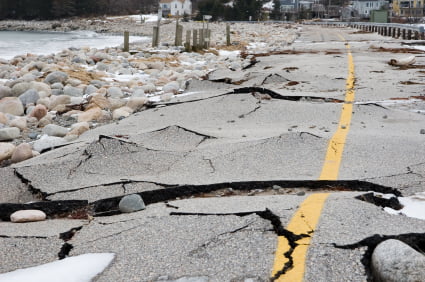This article explains the difference between a recession and a financial crisis, and the different effects each has on the California real estate market.
A crisis in the gears
The reasons for the Great Recession’s stunning and nearly unprecedented financial brutality are myriad: lender duplicity, buyer frenzy, agent complacency, government negligence, speculator interference, Wall Street greed, the increase in subprime mortgages and adjustable rate mortgages (ARMs), bankruptcy reform, deregulation — and the list goes on. Although any one of these factors may have individually led to the rampant growth which necessitated the Federal Reserve’s (the Fed’s) intervention, together they culminated in a different creature altogether: the first U.S. financial crisis since 1933.
While both recessions and financial crises pose significant financial difficulties for the real estate industry, knowing the difference between them gives real estate professionals the ability to shift their business strategies to meet the unique challenges and opportunities of each.
Here’s your car on Recession…
When a car goes too fast, you tap the brakes to keep it from getting out of control. In business-cycle terms, the car is the economy, the Fed is the driver and the brakes are the monetary policy which slows the car down when it reaches an unsafe speed.
So go recessions: they are premeditated corrections of the conditions caused by an overheating economy, and defined as three or more quarters of substantial economic decline. The Fed, by raising key interest rates (a practice called monetary policy) initiates a recession — a business slowdown — to steady the growth of the economy and ward off consumer price inflation. This increase in the cost of borrowing and reduction in money available in the system slows the ability of businesses and consumers to borrow money with which to consume goods and services. [For more information about the Fed’s role in recessions, see the June 2011 first tuesday article, Suspect behavior: why and how the Fed creates a recession.]
When the Fed steps on the brakes, interest rate increases fan out into the economy and, over a 12-month period, impact the cost of money for banks (lenders). To recoup their increased costs, lenders raise interest rates charged to (among others) their mortgage loan borrowers, i.e., potential homebuyers. This increase in mortgage rates necessarily lowers the price of the financial ability of potential homebuyers to purchase their homes. [For more information on the change in buyer purchasing power affected by changing interest rates, see the May 2010 first tuesday article, Buyer purchasing power.]
Employment also plays a major role in buyer purchasing power. As mortgage interest rates rise in reaction to the Fed’s increase in interest rates and perceived inflationary conditions, called contractionary monetary policy, this also affects employment numbers — jobs. Less money flowing in the economy means less money for new hires and pay raises, or, in more severe cases, layoffs to decrease existing payrolls. [For more information on current employment numbers, see the first tuesday Market Chart, Jobs move real estate.]
The decrease in buyer purchasing power culls the herd of potential homebuyers, resulting in a decrease in demand for homeownership since there are fewer homebuyers competing for property. Eventually, this decrease in demand causes housing prices to drop after the typical period of seller (and seller’s agent) denial. [For more information on the sticky price phenomenon, see the December 2009 first tuesday article, The flat-line recovery: a side-effect of sticky housing prices.]
Eventually, when the economy has contracted enough and the threat of consumer price inflation has passed, the Fed begins to lower interest rates and increases the flow of money back into the economy to stimulate economic growth. Lower interest rates lure prospective homebuyers back into the market, demand ticks up, housing prices follow soon afterwards (there’s no stickiness on the way up) and the cycle begins anew.
A garden-variety recession leaves in its wake sluggish real estate sales, high interest rates and a dip in housing prices. But that’s not happened with the aptly named Great Recession. Here’s what happened instead:
…now here’s your car on Financial Crisis
Imagine you’re a passenger in that car being driven by the Fed as it goes up a mountain road at night after a staggeringly hedonistic party. Neither of you are paying any attention to the signs, so you don’t realize you’ve crested the peak until, with a lurch, you feel the car beginning to go downhill, and at a pretty quick clip. Just ahead, there it is: Depression Ravine.
The Fed looks around for a way to stop the car from careening off the side of the road, but finds the brake cables have been cut. Simultaneously with this revelation, the steering wheel snaps off and a rear tire blows. This car’s going to stop, but it won’t be controlled, or pretty.
Welcome to a financial crisis.
A financial crisis, just like our fancifully ill-fated drive in the mountains, is the build up and result of serious fissures in the fundamental mechanics of a system, and the failure of individuals within that system to notice the faults before the disaster occurs. Unlike a recession, it is not a correction to a market error, but itself an error which must be corrected, and all that is built upon it is likewise slated for correction — whether these things are considered by us to be beneficial or detrimental.
Housing in crisis
For the housing market, the financial crisis meant going into reverse against all the homes sold on over-inflated values (resulting in negative equity assets) and cleaning out the unsound mortgages (resulting in the devastating number of defaults and foreclosures). Undoubtedly, these events also occur during recessions, but the key difference here is the sheer volume. Now and then, as seen in a recession, some people overextend themselves, but never had personal overextension been made so glamorous and accessible by an entire economy as during this financial crisis.
The first tuesday Market Chart, California tiered home pricing, tracks California housing prices as reflected by the Standard and Poor’s Case-Shiller home price index over the last 20+ years. In that time, we have had three recessions. In both of the two recessions prior to the Great Recession, housing prices remained relatively flat, dipping or rising slightly from the beginning to the end of the recession.
However, in the years leading up to the Great Recession, the effect of the financial crisis is markedly different. This difference manifests itself visually on the chart with the startling leap in housing prices during the so-called Millennium Boom and the equivalently steep drop in prices going into 2008, and through the 18-month recession to mid-2009.
It was a definite bubble, but it’s also more than just that: observe now the ratio of ARMs — the epitome of short-term, unstable real estate lending — to fixed-rate mortgages (FRMs) during that same period in the first tuesday Market Chart, The iron grip of ARMs on California real estate.
Despite the relative steadiness of low FRM interest rates, ARM loan originations were going through the roof. What’s the difference between getting an ARM and a FRM? It’s the buyer’s ability to financially sustain homeownership in the long term. Those ARMs represent not only prime short-term lending, but the insidious subprime option arms, upon which so much of this nation’s asset investment hung before the bubble imploded.
These anomalies all point to a severe rip in the fabric of the housing market, and by extension, the economy. While a recession is a normal policy reaction to heated growth in the market, a financial crisis is like market growth on steroids, lulling people into believing the strength is natural until the inevitable scandal and failure.
Nor is the solution to the throes of a financial crisis as “simple” as wielding monetary policy. To alleviate the effects of the financial crisis, the Fed had to institute heretofore unprecedented purchases of the pariah mortgage-backed bonds (MBBs), and lowered interest rates to literally zero for banks. The U.S. Treasury invested mega-billions in banks in order to shore up banks’ dangerously depleted reserves. The Fed has further kept interest rates at near the zero-bound for longer than a year in hopes of stimulating growth in the economy, with tepid, but favorable results.
A financial crisis is a terrible thing to waste
Knowing when a normal recession will hit and how it will impact the industry provides brokers and agents with the ability to tighten up their practices in readiness for a slower market, or even to switch their focus from sales to property management. They say fortunes can be made during recessions, and there are certainly brokers and agents who have done well during this recession in niches specific to a down market: short sales, representing lenders in the sale of real estate owned properties (REOs), entering the market as long-term buy-to-let investors or working with builders in acquiring and renovating REOs. Those who kept track of the direction of the market were the first to reap the benefits of these niches. [For more tools to use to forecast or keep tabs on the movement of California’s real estate market, see the first tuesday Market Charts.]
The depth and duration of a recession fueled by a concurrent financial crisis is difficult to navigate, in part because, by its nature, a financial crisis is not easy to predict – it’s what the economy doesn’t know it doesn’t know. However, the difficult situation posed to the real estate market by the financial crisis also presents brokers and agents a unique opportunity to have a say in how their industry is rebuilt to avoid a repeat of the excessive abuses of the Millennium Boom which lead to the financial crisis. For the first time in the nation’s history, an agency has been created whose sole purpose is to protect the consumer — homebuyers, sellers, landlords, tenants, investors — from abuse by lenders.
The knowledge of how this financial crisis impacted housing gives brokers and agents the context of their positions in the economy, how their actions, opinions and knowledge have an impact beyond the scope of a sales transaction. Failures in the real estate industry set the precedent for brokers and agents to now be advocates for themselves, and the correct and sustainable way of doing business. The proverbial iron is hot, and it’s time for the industry to step forth and call for better information standards, pricing fundamentals, lender regulation and industry accountability. [For more information about the new paradigm for a stable real estate market, see the two-part May 2010 first tuesday article, Looking through the window towards recovery: a real estate paradigm shift, Parts I and II; for more information about the new proposed regulations tightening lending criteria, see the May 2011 first tuesday article, How much medicine can the sick housing market stomach?; for a visual representation of the evolution of the financial crisis and some telling industry quotes, see the November 2008 Mint.com Visual Guide to the Financial Crisis.]















I have great respect for your Organization and would like to know your recommendations as to one’s investments. As I retired person, I do not have much faith in the stock market because it fluctuates to much–to have money in the bank does not pay either because it does not pay anything and when one is on a fixed income the inflation is taking a big chunk of one’s portfolio.. Where do you recommend that one invests nowadays?